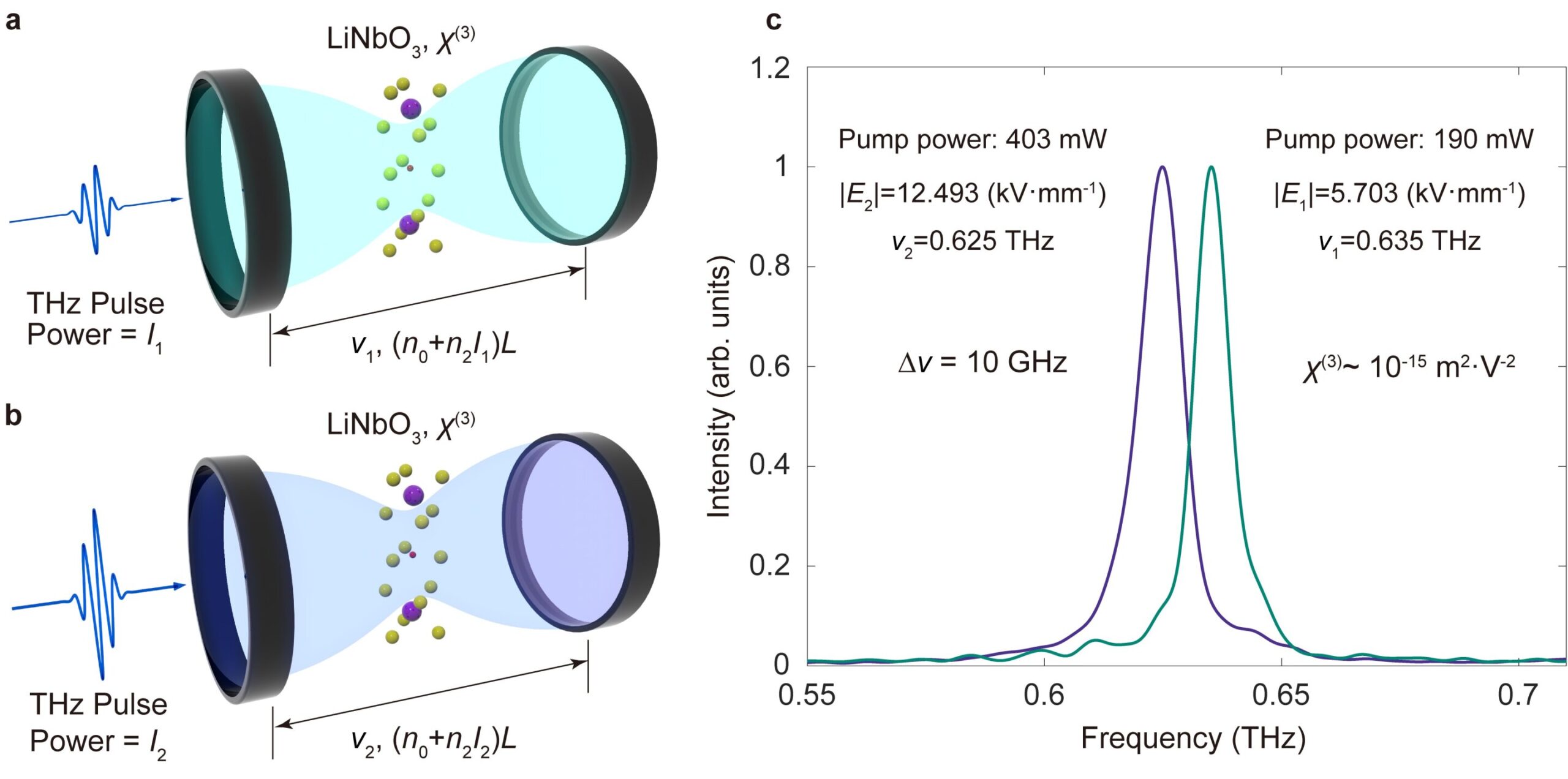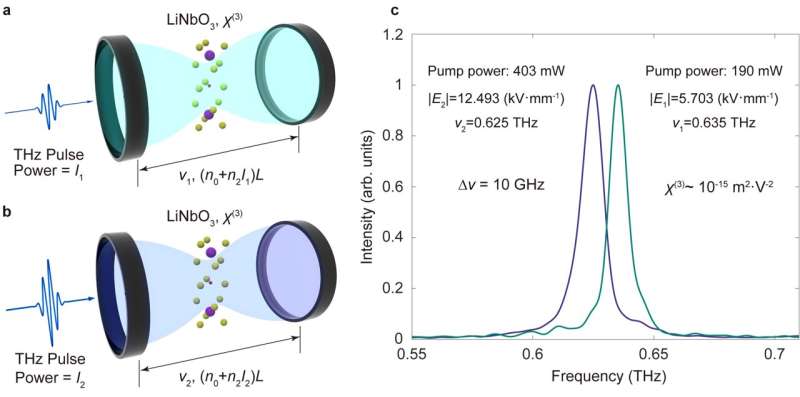

Terahertz (THz) waves and THz technologies have gradually opened a new style for communications, cloud-based storage/computing, information contest, and medical tools. With the advancement of THz technologies, studies on THz nonlinear optics have emerged, achieving considerable breakthroughs in both physics and technology.
However, studies on the THz Kerr effect (TKE) cannot support such a fascinating blueprint yet. In the literature, TKE results are either feeble or unstable in the complicated application occasions.
In a new paper published in Light: Science & Applications, a team of scientists, led by Professor Qiang Wu, Yao Lu and Jingjun Xu from The Key Laboratory of Weak-Light Nonlinear Photonics, Ministry of Education, TEDA Applied Physics Institute and School of Physics, Nankai University, Tianjin, China, and co-workers have utilized a new light-matter interaction mechanism through stimulated phonon polaritons (SPhPs), and demonstrated a giant TKE in a chip-scale lithium niobate Fabry-Pérot microcavity.
Under the influence of the giant TKE, the power-dependent refractive index changes resulted in frequency shifts of the resonant modes in a single-mode microcavity, which were experimentally measured and analyzed.
The experimentally SPhPs-enhanced third-order nonlinear optical susceptibility demonstrated was four magnitude orders larger than that in visible or infrared frequency, consistent with the theoretical predictions from the nonlinear Huang equations. In addition, the frequency shifts caused by the hybrid modulation (TKE and cross-modulation) in the multi-mode microcavity also align well with the theoretical predictions.
The reported results present an innovative platform for a range of practical THz photonic devices, which is conducive to the development of high-speed THz communication, and applicable to versatile, stable and compact THz photonic chips.
In the future, the study of supercontinuum spectra could possibly expand toward the THz frequency range, which could provide the SPhPs-enhanced TKE with an opportunity to exhibit their potential in broadband terahertz wave generation.
In their work, a Fabry-Pérot microcavity is fabricated on a 50 μm-thick x-cut MgO:LiNbO3 (LN) slab waveguide using the femtosecond laser direct writing technique. THz waves in the microcavity are generated by femtosecond laser pulses via nonlinear effects, ranging from 0.2 to 1.2 THz in frequency. The microcavity was initially single-mode designed, in which the resonant mode is located at 0.63 THz.
By focusing the pump pulses in the center of the microcavity, the single-mode microcavity is excited. Since the existence of TKE, the effective resonant frequency of the microcavity would be influenced by the input THz intensity, with a power-independent frequency-shift.
In addition, the researchers also investigated the “hybrid modulation” of a similar double-mode microcavity with resonant frequencies of 0.32 THz and 0.38 THz. Both the results imply a giant chip-scale TKE, exhibiting a nonlinear coefficient four orders of magnitude larger than that in the visible/ infrared range.
“The reported giant TKE results in the LN chip demonstrate that polar crystalline materials, especially LN, may also be a superior candidate for THz nonlinear platform, more than only an outstanding material for THz generation and detection.
“The SPhPs enhanced TKE presents an innovative platform for a range of practical THz photonic devices, which is greatly conducive to the development of high-speed THz communication, and applicable to versatile, stable and compact THz photonic chips,” they added.
“In the future, the study of supercontinuum spectra could possibly expand towards the THz frequency range, which could provide the SPhPs enhanced TKE with an opportunity to exhibit their great potential in broadband terahertz wave generation,” the scientists write.
More information:
Yibo Huang et al, Giant Kerr nonlinearity of terahertz waves mediated by stimulated phonon polaritons in a microcavity chip, Light: Science & Applications (2024). DOI: 10.1038/s41377-024-01509-y
Provided by
Nankai University
Citation:
Scientists demonstrate giant THz Kerr effect via stimulated phonon polaritons (2024, September 2)
retrieved 2 September 2024
from https://phys.org/news/2024-09-scientists-giant-thz-kerr-effect.html
This document is subject to copyright. Apart from any fair dealing for the purpose of private study or research, no
part may be reproduced without the written permission. The content is provided for information purposes only.